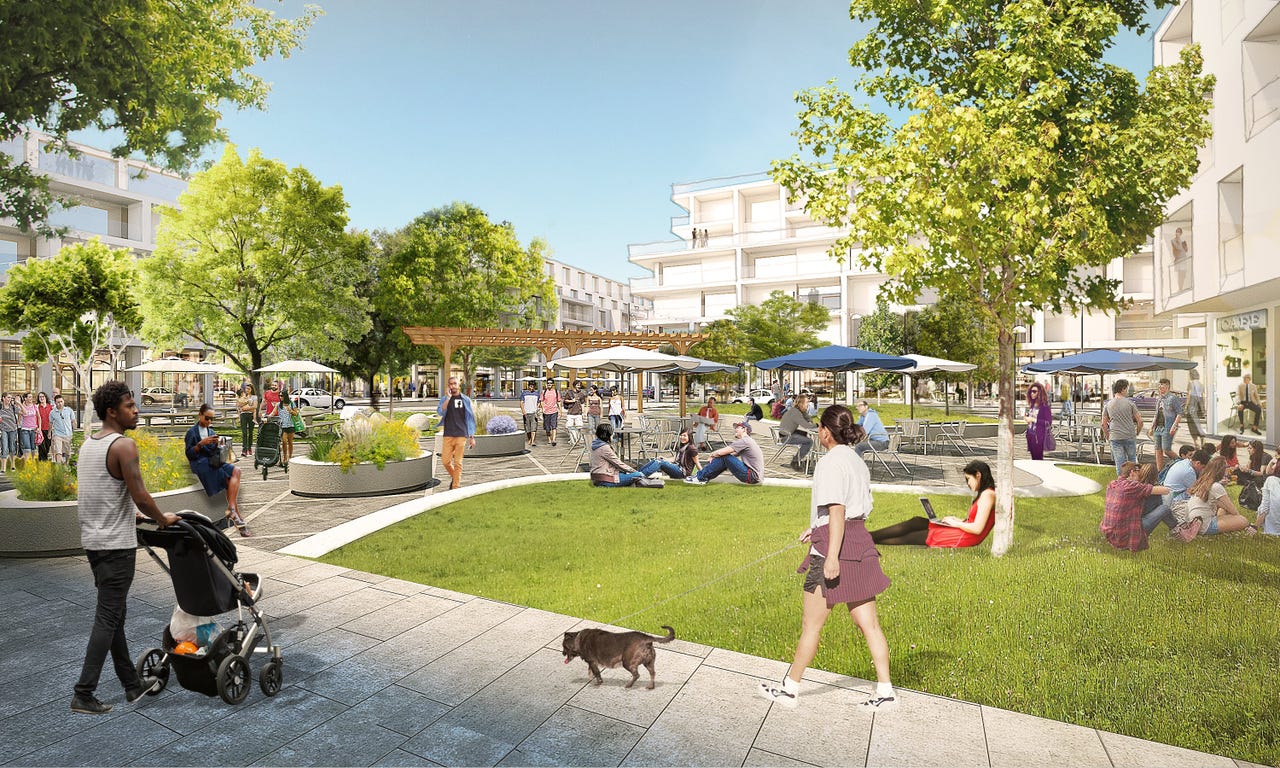Facebook needs more than a village, it merits a Zuckerburgh


Architect's rendering of the proposed Willow Campus retail park, which will be designed by OMA New York.
Mark Zuckerberg is known for thinking ahead, in terms of Facebook's development and the takeover of competitors such as WhatsApp. Moving Facebook from Harvard to Silicon Valley and, more recently, investing in a huge new campus in Menlo Park may be other examples. But the physical world could present more of a challenge than the digital version.
The fact is that Zuckerberg now has a housing problem: many of the people who work at Facebook can't afford to live nearby.
The obvious solution is for Facebook to build its own housing. Earlier this month, its vice president of Global Facilities and Real Estate, John Tenanes, announced that "we are now planning to redevelop the former Menlo Science & Technology Park which we intend to call Willow Campus". In a blog post, Tenanes wrote:
"Working with the community, our goal for the Willow Campus is to create an integrated, mixed-use village that will provide much needed services, housing and transit solutions as well as office space. Part of our vision is to create a neighborhood center that provides long-needed community services. We plan to build 125,000 square feet of new retail space, including a grocery store, pharmacy and additional community-facing retail."
This raises two questions. First, did Facebook think about these problems before it built MPK20 at Menlo Park? Second, has Facebook really considered the hundreds of support staff that the company also needs? Programmers may be able to work from home, but the cleaners, caterers, gardeners, security guards etc can't phone it in. They have to be there.
The same applies to the staff who will provide the "much needed" retail services, as well as things like child care.
OMA partner Shohei Shigematsu is working with OMA New York to design Facebook's Willow Campus
There's nothing new about companies building houses for workers. At its best, it resulted in the creation of "model villages" such as Sir Titus Salt's Saltaire, George Cadbury's Bournville and the Lever Brothers' Port Sunlight in the UK. The idea was copied in the USA by Milton Hershey, who built Hershey in Pennsylvania. Of course, there are many other examples. Corporate Landscape Magazine has a fascinating set of historical photos of some of them.
A model village - let's call it Zuckerburgh - could outlive Facebook, just as Saltaire has outlived Salt's textile business.
It's so obvious that he must have considered it. Indeed, Dave Eggers' novel The Circle, which is loosely based on Facebook, includes on-campus housing to reduce the need for commuting.
Given the land and zoning problems around Menlo Park, Zuckerburgh could be built somewhere else, if the transport links were good enough. To that end, Facebook has contributed $1m to a transportation study that includes the Dumbarton Rail Corridor (DRC), a railway built more than a hundred years ago (1907-1910) to bridge San Francisco Bay. Freight trains used part of the line until 1982.
Fast trains could easily deliver thousands of people to a new Willow Road station a short walk from Facebook, with onward connections to BART. (See the map at Wikipedia.)
The problems with Facebook's current plans for Willow Campus are that they won't make a huge difference for Facebook staff, and they will be even less help to ancillary staff, who work on contract. By the time Facebook builds its 1,500 homes, more than 10,000 people will be working at its Menlo Park campus, and they wouldn't be happy with Foxconn-style dormitories.
The situation is even worse for ancillary workers, as highlighted by a story printed in today's Guardian newspaper (Tuesday 25 July) in the UK. A husband and wife who work in Facebook cafeterias are living with their three children in a parent's garage because they can't afford anywhere else. It's unlikely they'd be able to afford one of the 225 homes Facebook plans to offer at "below market rates".
The wife, Nicole, earns $19.85 an hour working in cafeterias with names like Epic and Living the Dream. She says: "They look at us like we're lower, like we don't matter. We don't live the dream. The techies are living the dream. It's for them."
Because they work for contractors, not for Facebook, workers like her can't use the company gyms or medical facilities.
It would be easy to build Zuckerburgh in China or another developing nation, but it's difficult and may now be impossible in the sclerotic USA, where the infrastructure is in decline. The DRC, for example, made almost no progress between the 1991 feasibility study and the project being placed on "indefinite hold" in 2013. But Facebook could easily afford $1 billion to build the DRC. In fact, Zuckerberg is worth $69.1bn, so he could finance it out of his own pocket.
It doesn't have to make financial sense. This is Zuckerberg's chance to put himself on the map, literally. It could also be a step on the road to his eventual presidency.
This year, Zuckerberg is travelling around the USA to "learn about people's hopes and challenges". As Nicole says in the Guardian article: "He doesn't have to go around the world. He should learn what's happening in this city."